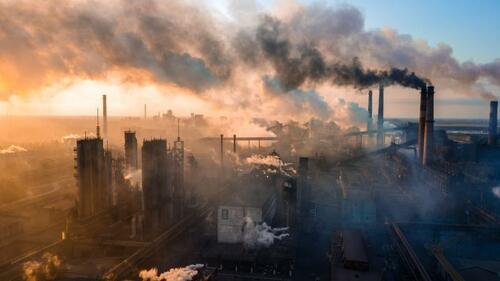The Supreme Court blocked the Biden administration "pollution-fighting" plan that would mean crippling new emissions requirements on power plants and pipelines in parts of the country to stem ozone pollution that wanders into downwind states.
It would also mean choking off US power supply at a time when AI data centers are draining the electrical network at record levels with little pushback from the same Biden administration which is oh so very concerned about the environment... but not when ultra liberal corporations are to blame.
The justices, voting 5-4, and which was split men vs women as Trump appointee Barrett voted along with socialists Sotomayor, Kagan and Jackson, put the Environmental Protection Agency’s “good neighbor” rule on hold while courts consider challenges pressed by upwind states, industry groups and companies led by Kinder Morgan.
In doing so, they rejected arguments by the Biden administration and Democratic-controlled states that the plan was cutting air pollution and saving lives in 11 blue states where it was being enforced and that the high court’s intervention was unwarranted.
The rule is intended to restrict smokestack emissions from power plants and other industrial sources that burden downwind areas with smog-causing pollution.
It will remain on hold while the federal appeals court in Washington considers a challenge to the plan from industry and Republican-led states.
The delay could be a lengthy one given that litigation over the rule is in its early stages. The focus now shifts to a federal appeals court, which will take the first look at the challenges.
The Supreme Court order halts a rule that would have applied to 11 states, a number that had already been cut from 23 because of separate legal battles. A key issue in the fight was whether the EPA had adequately considered whether its approach was warranted even if it applied to only a subset of upwind states. The rule was originally scheduled to take effect last August.
The challengers — Ohio, Indiana and West Virginia — contended the rule would impose billions of dollars in costs in the first year alone and threaten the reliability of the electricity grid by forcing generators into early retirement.
The Biden administration said the rule would protect the health of people in downwind states suffering from emissions by their neighbors.
The administration was backed by a group of downwind states led by New York.
The rule is part of a two-pronged EPA approach that relies on the rejection of state plans to curb ozone followed by the imposition of a federal alternative.
A number of states have managed to freeze the rejection component of EPA’s plan, reducing the reach of the alternative.
The justices took the unusual step of holding an argument session in the case even though they were considering only a request for an interim order as part of the court’s emergency docket.
